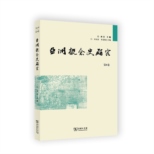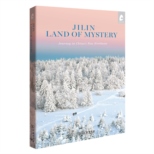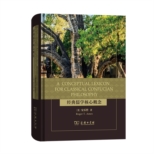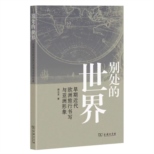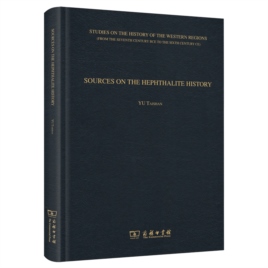对中外嚈哒史相关史料的全面辑注
丛书简介:
本丛书的研究范畴是公元前六世纪至公元六世纪的中亚史。
这一时段的中亚史有各种原始资料,其中汉语资料无疑是最关键的。可以说,没有汉语资料,这一时段的中亚史无法构建。西方(包括印度、俄罗斯)学者研究这一时段的中亚史已有一个半世纪,成绩可圈可点。其主要缺点是没有充分利用汉语史料。弥补这一缺憾的是日本学者,从白鸟库吉算起,至少已有四代学者投身这一时段的中亚史研究,其主要特色正是利用汉语史料。可惜的是,日本学者很少英译自己的论著,西方学者又多不习日语,因而日本学者的有关成果罕见引用。余氏的研究不仅填补了中国中亚史研究的空白,而且比日本学者更充分地利用了汉文史料,且不说余氏以汉语为母语,对汉语史料的理解应胜过日本学者。
该文集的出版则有助于西方学者理解和运用汉语史料,使国内中亚史的研究深入世界,继而使得世界史意义上的古代中亚史研究更上层楼。
十本英文著作大部分已在国外发表。著者的译文均经Prof. Victor H. Mair(梅维恒)和Dr. Bruce Doar(陶步思)修改、编辑。两位都是优秀的学者——母语是英语、精通汉语、有丰富的编辑经验、熟悉古代中亚历史,最主要的是极端负责的工作精神。十本英语论著发表时间跨度较大(1990—2017),又经过不同的英语编辑,原译文差异不小,这一次由著者本人历时2年,做了统一译文的工作。
余太山先生,是著名的中亚古史研究奠基性学者。毕业于中国社会科学院研究生院历史系,后于历史所任职,1993年起为研究员,曾任中外关系史研究室主任。专治古代中亚史、中外关系史。现为中国社会科学院荣誉学部委员。
SOURCES ON THE HEPHTHALITE HISTORY是同作者《嚈哒史料辑注》一书的英文版,是作者对中外嚈哒史相关史料的全面辑注。
作者自1979年开始研究嚈哒史以来,一直没有停止收集与嚈哒史直接有关的资料。他将已收集到者结集,编成《嚈哒史料辑注》。除汉语的若干篇外,计有希腊—拉丁语的11种、亚美尼亚语3种、叙利亚语2种、梵语10种、阿拉伯语3种、波斯语3种和藏语1种。采录入书者,除1种系法语外,其余均为英译。作者谦逊地认为,之所以不考虑汉译之,盖英译出诸各语文专家之手,译文与原文几乎是等值的,若转译为汉语,这本史料集的价值势必大打折扣。至于古汉语资料,为了和全书保持一致,作者转译成英语。
PREFACE ...... 1
A. SOURCES IN GREEK AND LATIN ...... 2
1. Priscus, History of Byzantium ...... 2
2. Procopius, History of the Wars ...... 6
3. Agathias, The Histories ...... 18
4. Maurice, Strategikon ...... 20
5. Menander the Guardsman, The History ...... 21
6. Theophanes of Byzantium, The History ...... 26
7. Kosmas, Christian Topography ...... 27
8. Theophylact Simocatta, The History ...... 29
9. Theophanes Confessor, The Chronicle ...... 31
10. Die Akten der Edessenischen Bekenner Gurjas, Samonas und Abibos, aus dem Nachlass von Oscar von Gebhardt ...... 33
11. Nikephoros Callistus, Historia Ecclesiastica ...... 34
B. SOURCES IN ARMENIAN ...... 39
1. Łazar Pʿarpecʿi, The History of Armenia ...... 39
2. Eḷishē, History of Vardan and the Armenian War ...... 44
3. The Armenian History Attributed to Sebeos ...... 49
App. Pseudo-Yovhannēs Mamikonean, The History of Tarōn ...... 54
C. SOURCES IN SYRIAC ...... 60
1. Anonymous, Life of Mar Aba ...... 60
2. The Chronicle of Pseudo-Joshua the Stylite ...... 61
D. SOURCES IN ARABIC ...... 67
1. Ṭabarī, History ...... 67
2. Dīnawarī, Kitāb al-akhbār al-ṭiwāl ...... 85
3. Eutychius, The Annals ...... 91
4. Maçoudi, Les Prairies d'or ...... 98
E. SOURCES IN PERSIAN ...... 103
1. Firdausí, Sháhnamá ...... 103
2. Mirkhond, The Rauzat-us-safa ...... 146
3. Balʿami, Chronique de Abou Djafar Moʿhammed ben Djarir ben Yezid Tabari ...... 155
F. SOURCES IN SANSKRIT ...... 172
1. Bhitarī Stone Pillar Inscription of Skandagupta ...... 172
2. Junāgaḍh Rock Inscription of Skandagupta, the Years 136, 137, and 138 ...... 173
3. Ēraṇ Stone Pillar Inscription of Budhagupta, the Year 165 (484-485 CE) ...... 174
4. Ēraṇ Stone Boar Inscription of Toramāṇa ...... 175
5. The Kura Inscription of Toramâṇa Shāha ...... 177
6. Eran Posthumous Stone Pillar Inscription of Goparaja, the Year 191(510-511 CE) ...... 178
7. Gwālior Stone Inscription of Mihirakula (c. Early 6th Century CE) ...... 179
8. Mandasôr Stone Pillar Inscription of Yasodharman ...... 181
9. Mandasor Stone Inscription of Yasodharman and Vishnuvardhana, the Malava Year 589 ...... 184
10. Aphsaḍ Stone Inscription of Aditysena ...... 185
Appendix Kalhaṇa’s the River of Kings ...... 186
G. SOURCES IN CHINESE ...... 193
[A] ...... 193
1. Liangshu ...... 193
2. Weishu ...... 202
3. Zhoushu ...... 219
4. Suishu ...... 221
5. Jiutangshu ...... 225
6. Xintangshu ...... 226
[B] ...... 228
1. Tongdian ...... 228
2. Tanghuiyao ...... 232
3. Zizhi tongjian ...... 233
[C] ...... 234
1. Youyangzazu ...... 234
2. Taiping guangji ...... 235
3. Cefu yuangui ...... 235
[D] ...... 237
Liang zhigongtu ...... 237
[E] ...... 244
1. Luoyang qielanji ...... 244
2. Xu gaosengzhuan ...... 250
APPENDIX ...... 251
1. Datang xiyuji ...... 251
2. Lianhuamianjing ...... 254
3. Fufazang yinyuanjing ...... 255
H. SOURCES IN TIBETAN ...... 259
Rgyal-rabs for Several Monarchs in the North ...... 259
APPENDIX ...... 262
Records on Early Sogdiana in the Official Histories of the Western Han, Eastern Han, Wei, Jin, and Southern and Northern Dynasties ...... 262
BIBLIOGRAPHY ...... 303
INDEX ...... 317
POSTSCRIPT ...... 331
PREFACE The historical materials on the Hephthalites involve at least nine languages. Of them, the most important are undoubtedly the Chinese historical materials. In a manner of speaking, if there were no Chinese historical materials, it would be impossible to reconstruct the history of the Hephthalites. The number of Chinese historical materials is few, but they cover a very wide range. Here we can only select the most valuable, and dismiss repetitive or indirect materials. For studies on the Hephthalites, the Byzantine historical data are also of high value, and are comparable to the Chinese data. For these, records on the relations between the Sasanian Empire and the Hephthalites are complementary with the records of the Arabian and Persian data, and on the relations between the Hephthalites and the Kidārite Kushāns, the Byzantine and Chinese records can support each other. Also, for example, the records on the relations between the Hephthalites and the Türks etc. are most interesting. Both the Arabian and Persian data focus on the relations between the Sasanian Empire and the Hephthalites. Today we rely mainly on these two kinds of data to research the relations between Persia and Central Asia during the Hephthalite period. There are differences in the records of the Arabian and Persian historians when they describe similar events, but they do not seem to be irreconciliable, and it is possible that they have a common source. The Sanskrit data only involve the Hephthalites’ activities in India. Although many are only indirect records, we basically rely on these to glimpse the Hephthalites’ activities after they cross the Hindu Kush Mountains, and the impacts of the Hephthalites’ migration southwards on the Gupta dynasty. The accuracy of the Armenian data is poorer, but there are have their unique value. For example, the information disclosed about the situation in Tokharistan after the Hephthalite were destroyed may be fuzzy, but is worth pondering over. The Syrian and Tibetan data are fewer, but they are also integral parts to make up the tangram of the Hephthalite history. Here we do not introduce them individually
